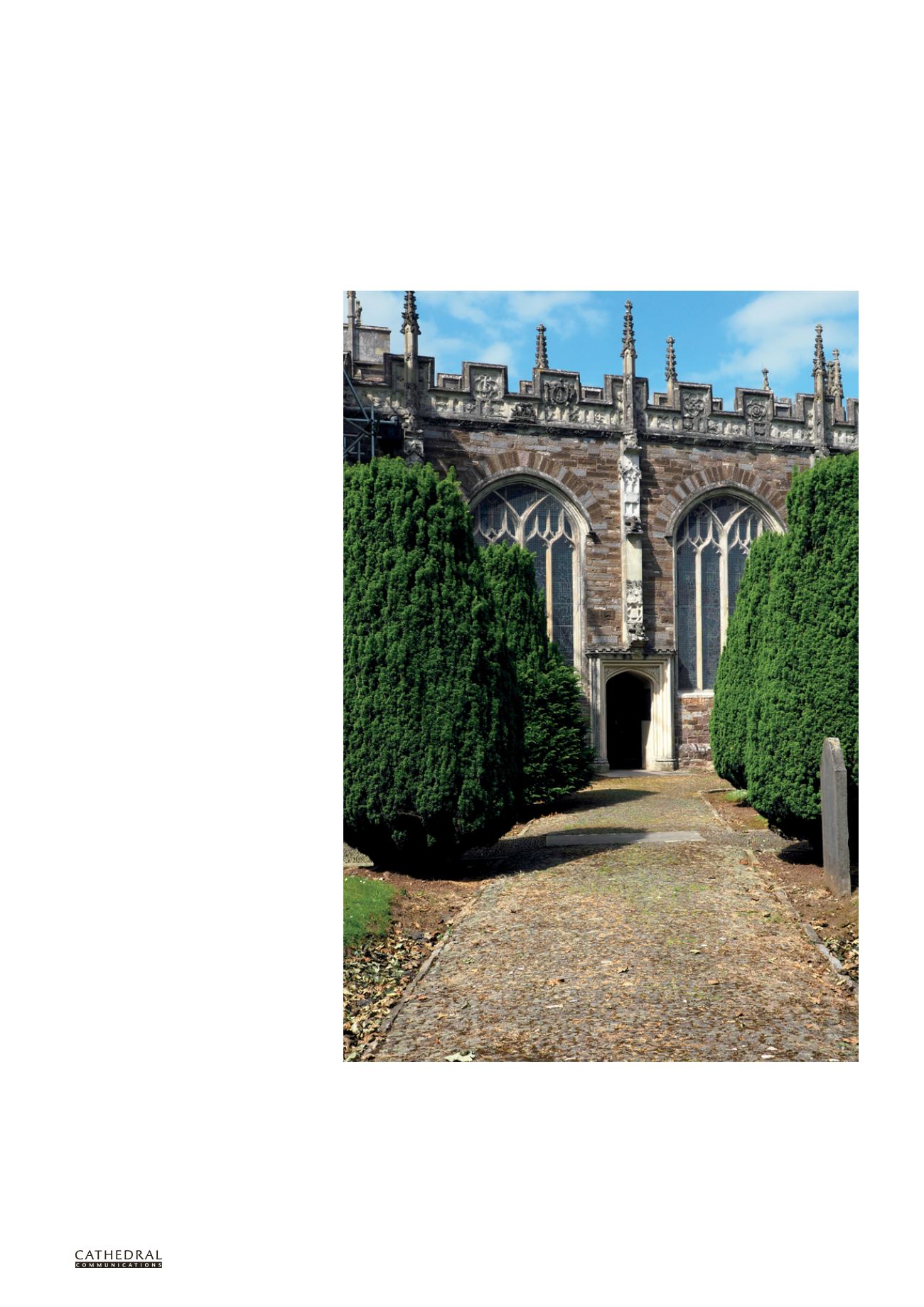

BCD SPECIAL REPORT ON
HISTORIC CHURCHES
24
TH ANNUAL EDITION
37
COBBLE REPAIRS
Robin Russell
A
WIDE VARIETY of paving using
locally-available small stones can
be found in churchyards across
the UK. Lying forgotten within their
hallowed grounds, they are often the
last surviving examples of the traditional
surfaces used on neighbouring streets
and paths, so give a valuable insight into
the appearance of the local townscape
before it became covered in tarmac.
Generally, these ‘small-unit’ materials fall
into two categories; cobbles or setts.
Small stones which are cut and
shaped, often quite roughly, are now
known as setts, although many people still
refer to them as cobbles, In areas of the
country where the local stone was easily
split, thin setts are sometimes end-bedded
or ‘pitched’ into the ground. (The term
pitched has nothing to do with the use
of bituminous pitch.) Granite setts are
the most hard-wearing and can be found
furthest from their source as they often
replaced softer local stones following
the development of canals and then the
railways to transport them.
The term ‘cobbles’ describes the
smoother, more rounded stones that
were fashioned by natural erosion or
running water, and were used uncut, as
found. Cobbles were used extensively
to create paths, roads and hardstanding
areas, such as courtyards. Cobble-laying
is a simple but very useful technique, but
unfortunately, as with other trades, the
knowledge of how to do it well has largely
been lost as cheaper and often less-
effective methods have been adopted.
Where cobbled paths have survived,
it is important to carry out repairs using
appropriate materials for both cobbles
and bedding, and to preserve as much
of the original scheme as possible.
At the outset of a project it is therefore
important to identify which areas of the
cobble are to be repaired. Photographs
and sketches should be used to clearly
communicate the nature and scope of the
work to any contractors and controlling
authorities. The key principles are:
Documentation
– record the cobble
before intervention and document
the intervention itself so that future
conservation work is well informed
Minimal intervention
– retain the maximum
amount of historic cobble and repair
rather than replace wherever possible
Reversibility
– ensure that alterations
and additions to cobbled areas can
be undone without harm
Like-for-like
– wherever possible,
match materials and techniques to
the existing work
Tightly packed flat-topped cobbles bound by small kerb stones provide a relatively even surface at St Peter's,
Tiverton, Devon


















